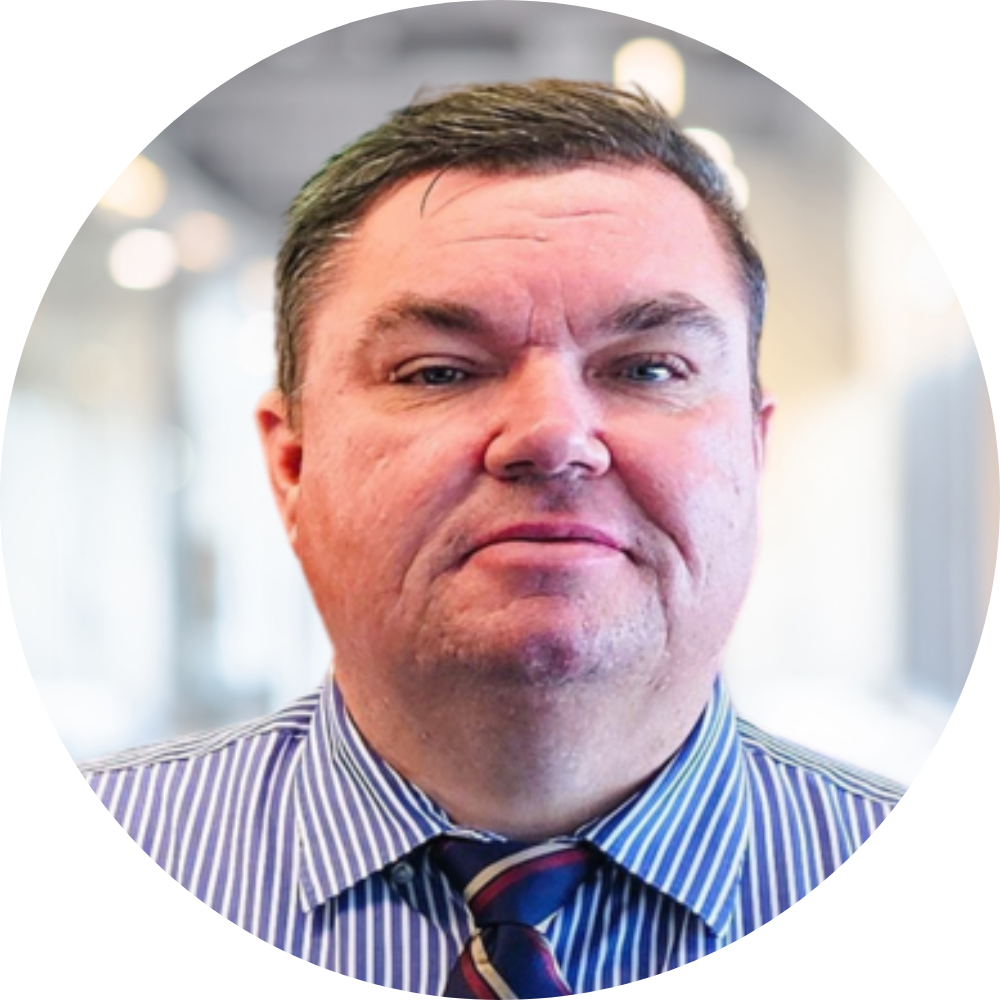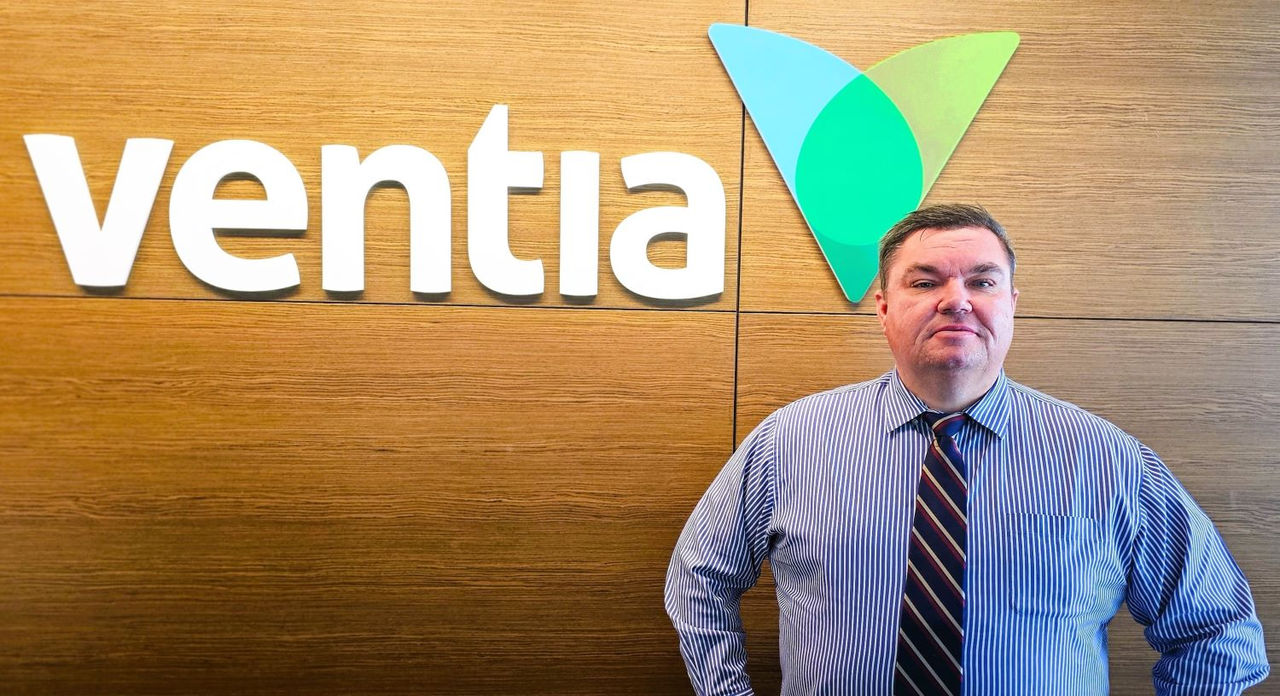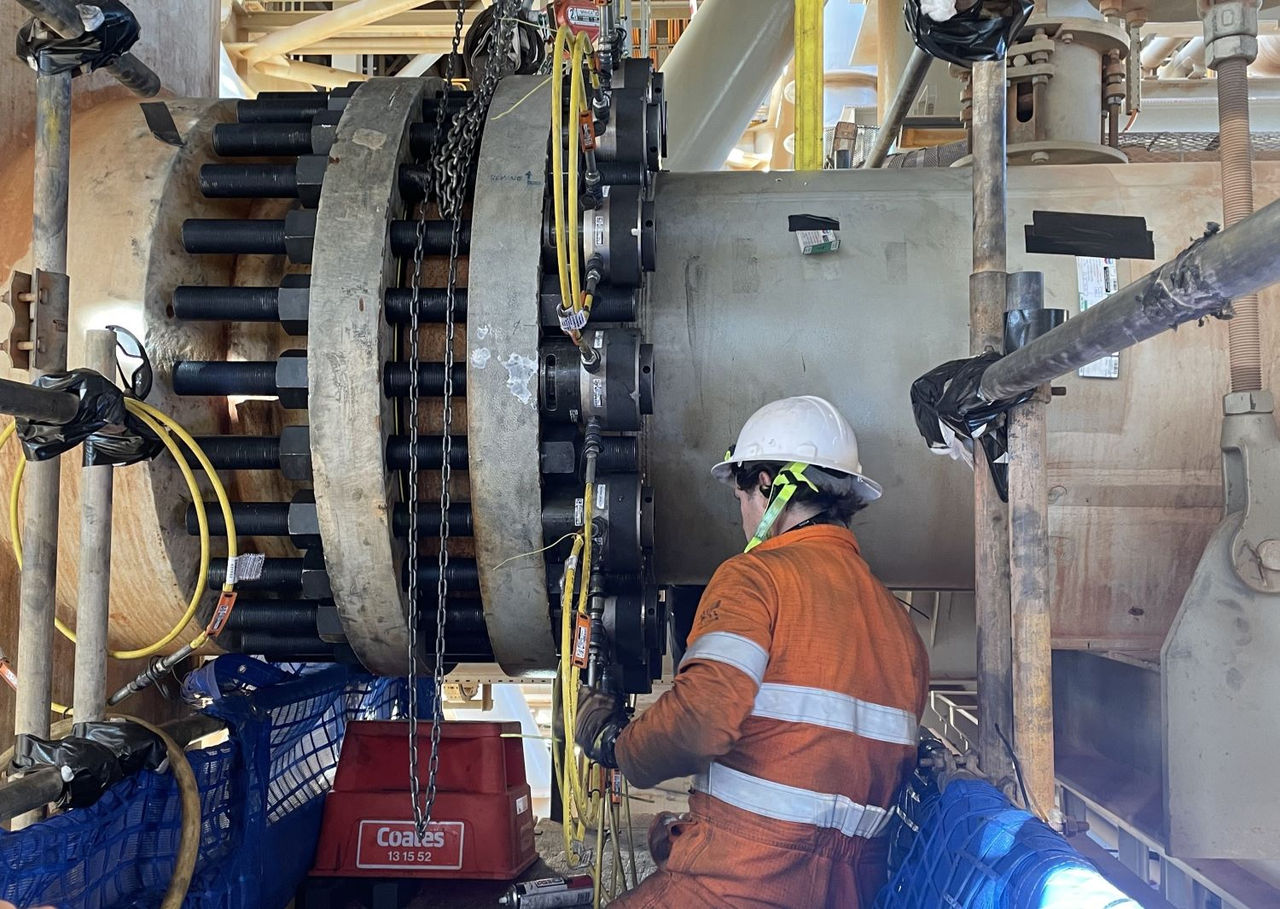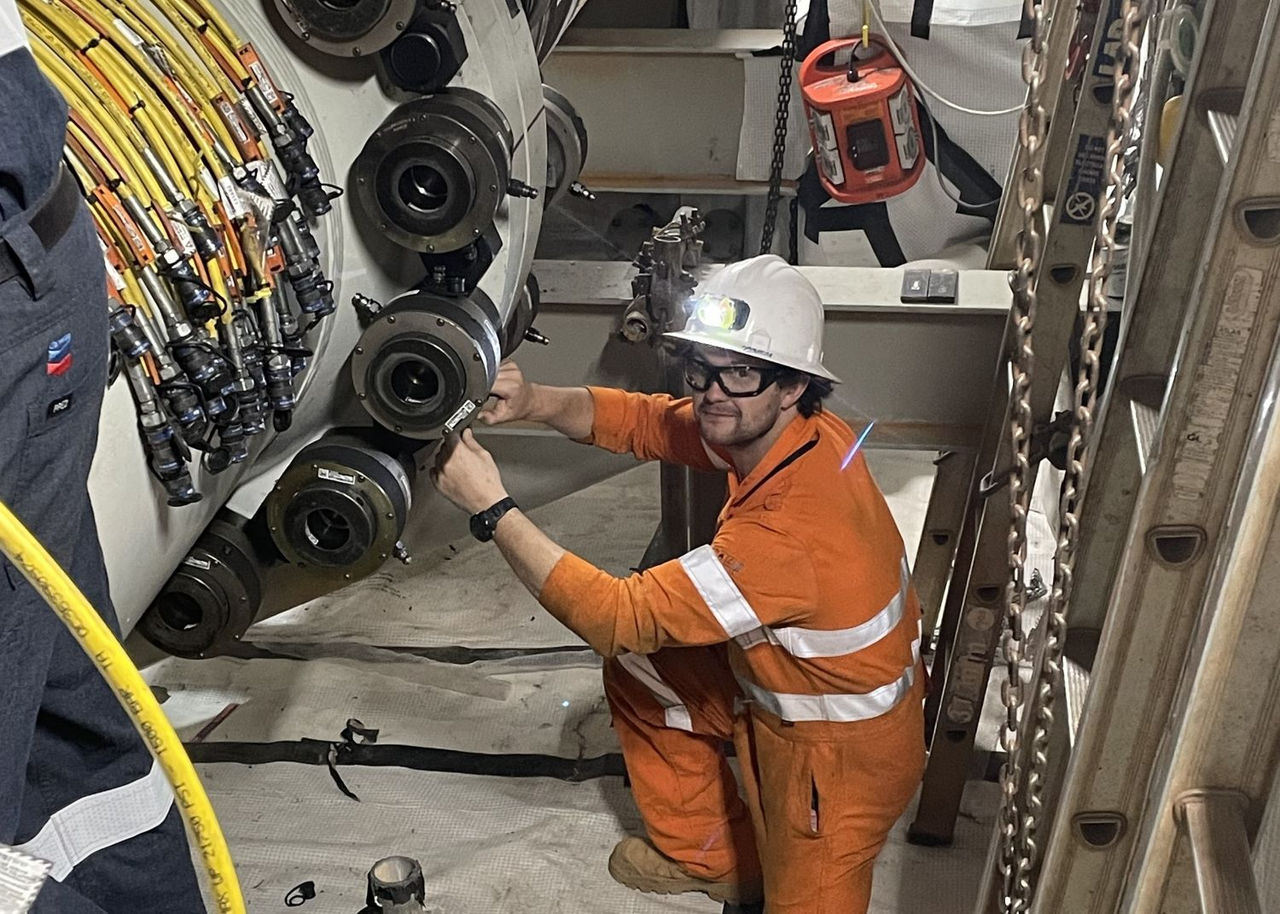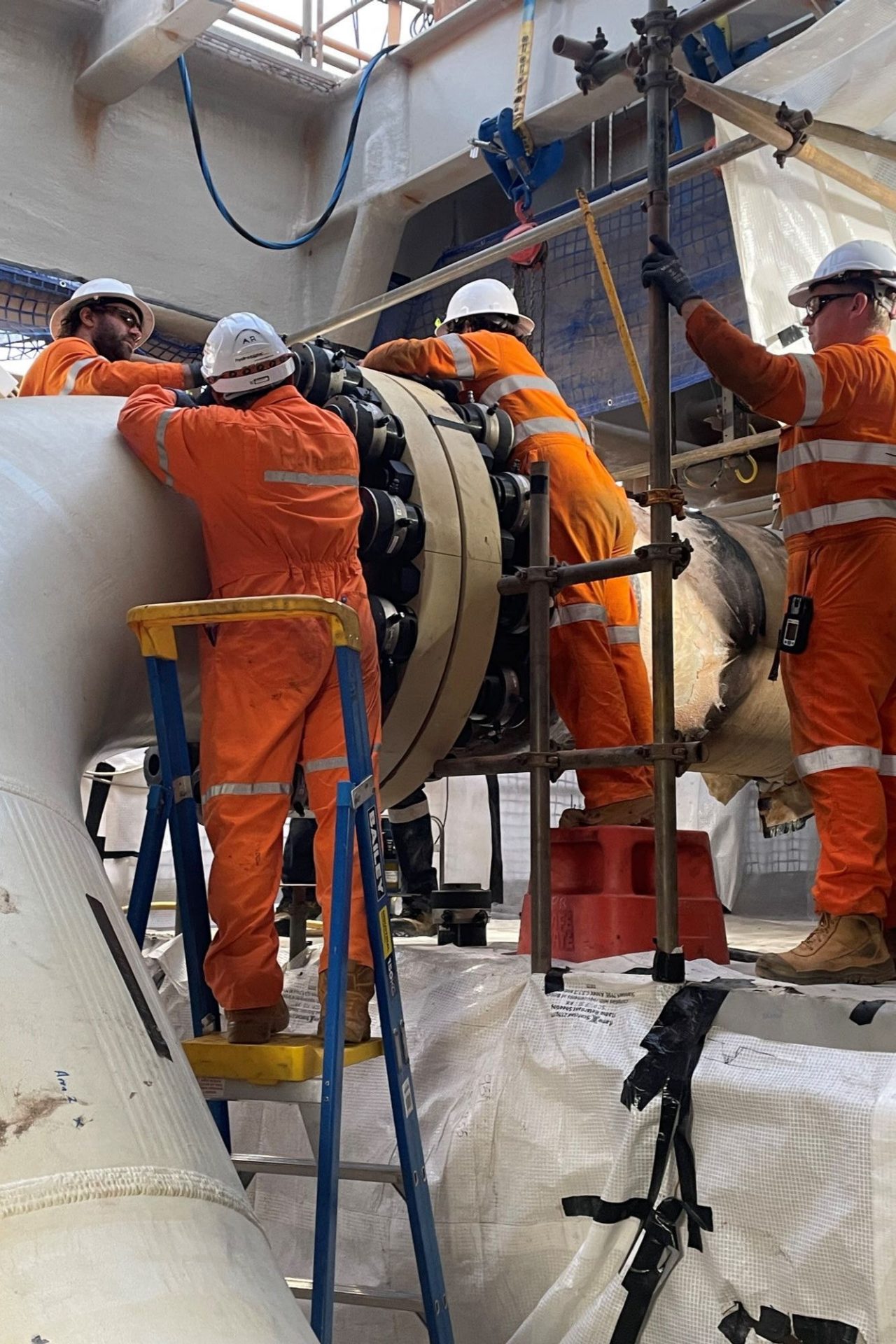In conversation with
Andy Burnett
Ventia turnaround manager Andy Burnett discusses what makes an effective turnaround and Ventia’s innovations within the space.
Sometimes referred to as a TAR, a turnaround is a planned period of regeneration in a plant or refinery. During this time, an entire part of the operation is put offline, while plants are inspected and revamped.
With over 25 years of experience within managing turnarounds, Andy Burnett discusses some of the key aspects that make them successful.
What is your experience in turnarounds across large scale assets?
I’ve been lucky enough to work in different parts of the world and for the last 25 years, I’ve worked as a turnaround manager for large scale projects in downstream oil refining, downstream petrochemicals, upstream offshore gas and oil assets in the west coast of Africa and then LNG assets in the Middle East and Australia.
In your opinion, what makes a successful turnaround?
Everybody’s focus is on the execution. From getting the overalls on, to getting the spanners out, that’s what everyone thinks is all about getting a turnaround right.
But it is about the 18 months before then. It’s all in the planning phase. One of my caveats I always say to my team is, the execution is easy if you get the planning right. The planning preparation is key to a successful turnaround.
A turnaround is a major activity for our clients, they cost a lot of money, they impact production and their cashflow, they are very hazardous to execute, bringing the plants down and starting them up safely, and they introduce risk if things don’t go to plan.
They also take a lot of effort and most, if not all the functions from the sites are involved from day one in planning, 18 months before execution. This in itself is a challenge because the teams and people have their day job to do with daily priorities, so getting folks involved when they are needed, is a challenge. To help this the management of the whole process from start to finish is usually covered in an effective process and workflows. This process is the roadmap to success. It’s key to have good leadership who help use the process and get the organisation involved, doing the right activity when it’s needed.
The road map covers the phases you need to hit to make sure that you have enough time to do the next phase. Turnarounds are very much a phase or gate scenario where there are seven gates you go through from start. For Ventia, we play from gate three until gate seven. Gate three is very much the early scoping, gate four is the detailed planning, gate five is the pre-works on site and then gate six is the execution.
It’s all in the planning phase. One of my caveats I always say to my team is, the execution is easy if you get the planning right. The planning preparation is key to a successful turnaround.
It sounds complicated but the phased process is really a game of two halves, the first half is strategic, the second half is tactical, so in the first half the organisation is involved in developing the TAR Strategy and working out the right work to execute to make sure the plants are safe, reliable and compliant. The second half is about planning the work well, making sure all the work is planned and materials and equipment are available when needed, during execution. I liken it to a bit lite a Ferrari pit-stop, only it’s a bit longer on a major LNG plant or refinery.
So, the success of a turnaround is about ensuring the turnaround has a good strategy and the right scope of work is selected plus a quality of the job planning and the schedule, but it is also about making sure that we hit the milestones.
Over the years, it made sense that the turnaround is a cycle, and it means that of those seven gates, one of the most important gates is the last one, which is the lessons learned.
The only way we improve and make turnarounds better going forward and taking that from company to company is the lessons learned phase. It’s about understanding how all those gates went, what were the lessons learned for planning, preparation, execution, and then making sure we take that and do the next one and learn from it.
At Ventia, we spend a bit of time on closing out the previous turnaround and then getting together in a workshop to discuss what went well and what are the lessons we have learned. We need to learn from our experience and the industry so we make sure we can execute the turnarounds flawlessly, safely and efficiently.
It’s very much about being a partner, working together and setting the scene from day one.
What should clients look for in service providers for turnarounds?
Turnarounds are major maintenance work. As a client, you do need someone who understands that mentality. In a service provider, clients want flexibility.
At Ventia, we have people who can do both the planning and execution aspects of turnarounds. I’ve found that there’s always a gap between planning and execution so our team in the service provider world can job plan and execute, as well as close out the whole cycle of turnarounds. We have strong values that all our team, and clients, appreciate that guide our behaviours and actions. A key value driven from top down is excellence and continuous improvement, this helps us learn, make sure we sustain what goes well, and learn to put things in place when we see opportunities for improvement. This makes sure we excel at what we do.
Other providers don’t have that same flexibility. We have a unique team where they sit in the office for eight months, they write job plans, permits, and then they’re on the plane the next morning to execute as supervisors and area superintendents, which is a huge benefit to clients as we manage the whole cycle.
The other important aspect to note is the scheduling side. Trying to try to be predictive in the scheduling space. When we build a schedule, obviously that drives production, cargoes, etc. in the LNG space, which is a large cost for our trains in the turnaround space, so we really need to be predictable.
When clients expect a certain schedule that’s been locked in, we need to deliver against that.
A key value driven from top down is excellence and continuous improvement, this helps us learn, make sure we sustain what goes well, and learn to put things in place when we see opportunities for improvement. This makes sure we excel at what we do.
What are some other innovations Ventia has implemented into its turnaround services?
Some of the technologies that we are pushing is trying to get away from doing hot works on sites. During turnarounds, doing welding work is very, very complex and constrained with, obviously being a gas plant so anything that breaks a spark, takes a lot of focus. Some of the technologies we’re trying to push is to go away from that and use what we call cold work technologies.
Another example is our use of CCTV. A lot of the works are inside confined spaces and that’s generally a human going in and someone standing by every single entry.
With this technology, you could do all this with CCTV, and it means that all that’s managed is a control room with screens. So again, we’re pushing that to get efficiencies and productivity but also to stop the entries in the having people hanging around gas plants when we don’t need to.
How important is the relationship between client and service provider?
It’s very much about being a partner, working together and setting the scene from day one.
When you start a contract, sit down and get around the table to understand what it is clients really want.
From there, it’s about making sure you hit every single milestone because for clients, they have to report out internally so if we’re slipping on a certain activity, they have to let people know.
It just comes down to understanding the clients, what their needs are for the turnarounds, and then just making sure of those promises and plans that we put in place, otherwise, that relationship goes and it’s all about relationships really.
Summary
- Andy Burnett has over 25 years of experience managing turnarounds for large-scale projects, he discusses Ventia's specialised expertise and strategic approach to delivering successful turnarounds for our clients in the energy industry.
- The key to a successful turnaround is in the 18 months of planning and preparation prior to execution. The planning phase is critical, as it involves developing the turnaround strategy, scoping the necessary work, and meticulously scheduling and planning all aspects.
- Some of Ventia's innovations include using "cold work" technologies to avoid hazardous hot work, and utilising CCTV to monitor confined space work rather than having workers physically enter.
- Ventia aim to be a true partner that deeply understands the client's needs. Transparency, open communication, and hitting all milestones are essential to maintaining a strong working relationship.
